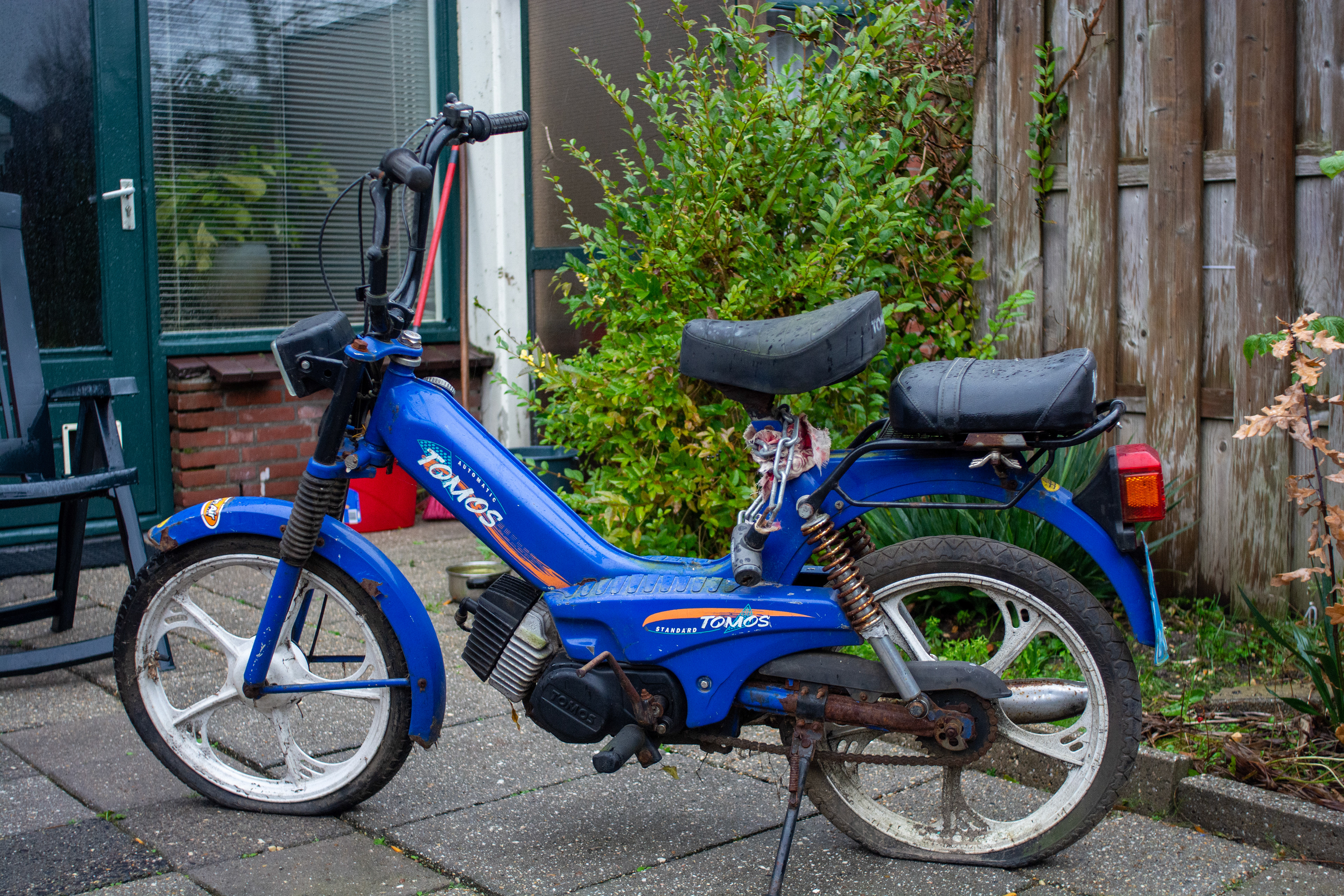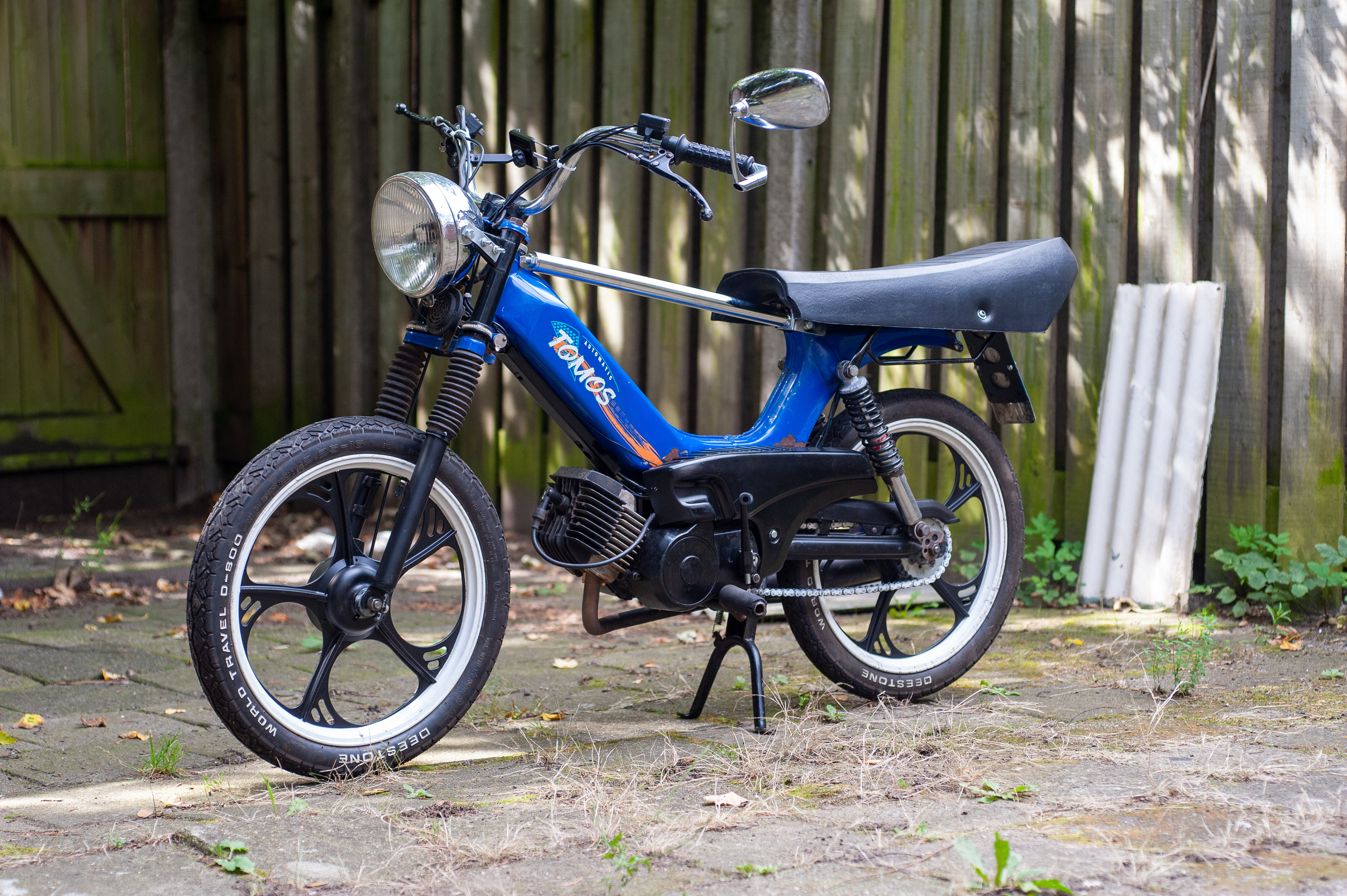In 2022, I saved a 2005 Tomos A35 moped from the junkyard and turned it into a resto-mod passion project. It was almost a full restoration, mechanically and cosmetically. I rebuilt the engine from the ground up, tuned the performance, and resprayed the entire frame. I didn’t just want it to run; I wanted it to feel joyful. Through bright colors, small design tweaks, and a big, cheerful headlight, I tried to make it express positivity. I leaned into its retro roots while modernizing systems. I converted the entire electrical setup from AC to DC, allowing me to use efficient LED lighting without compromising the vintage vibe. Over two years, I lived with the design; riding it, tweaking it, and slowly shaping it into something personal. What started as a junk-bound frame became a rolling expression of optimism and nostalgia.
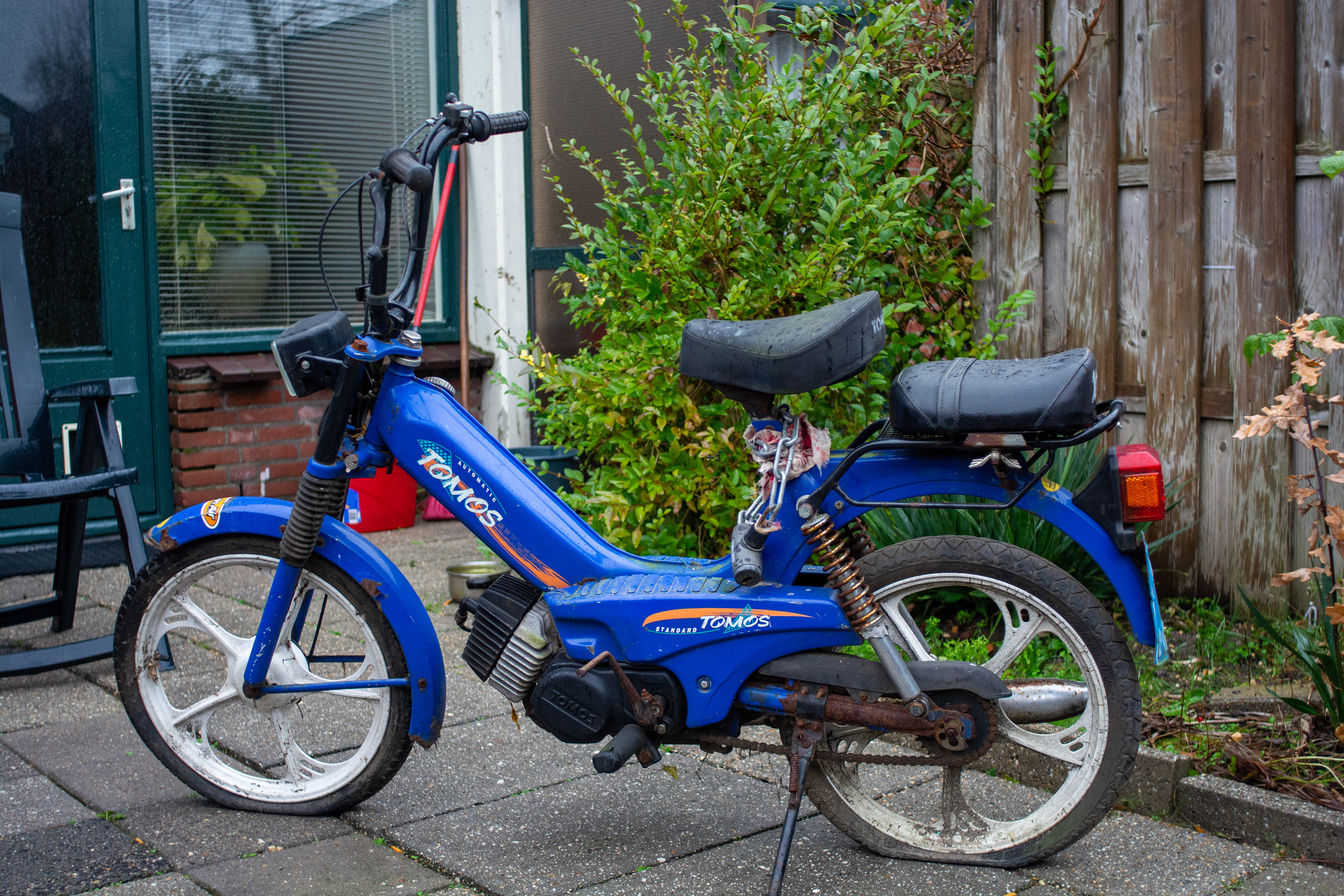


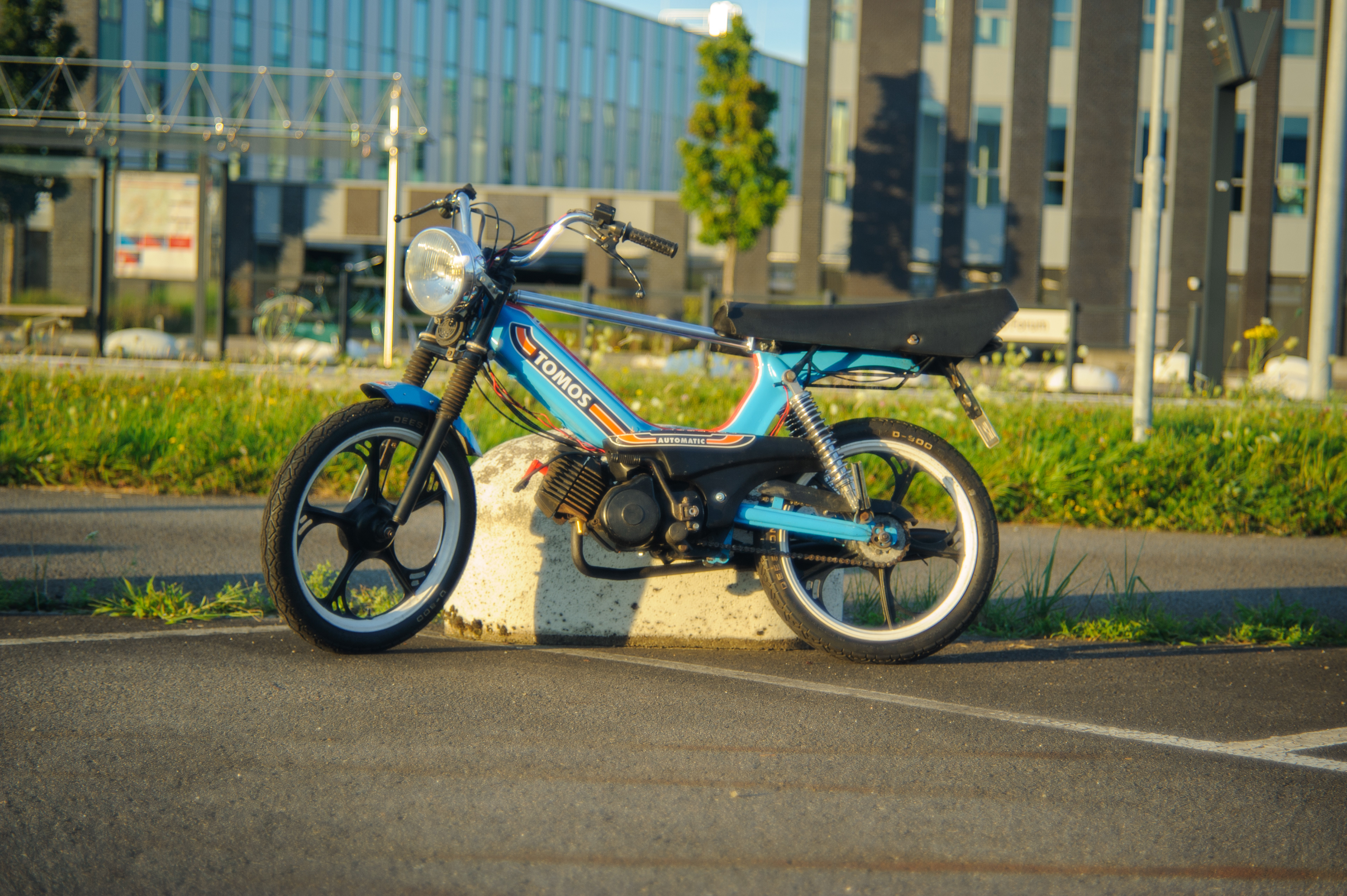
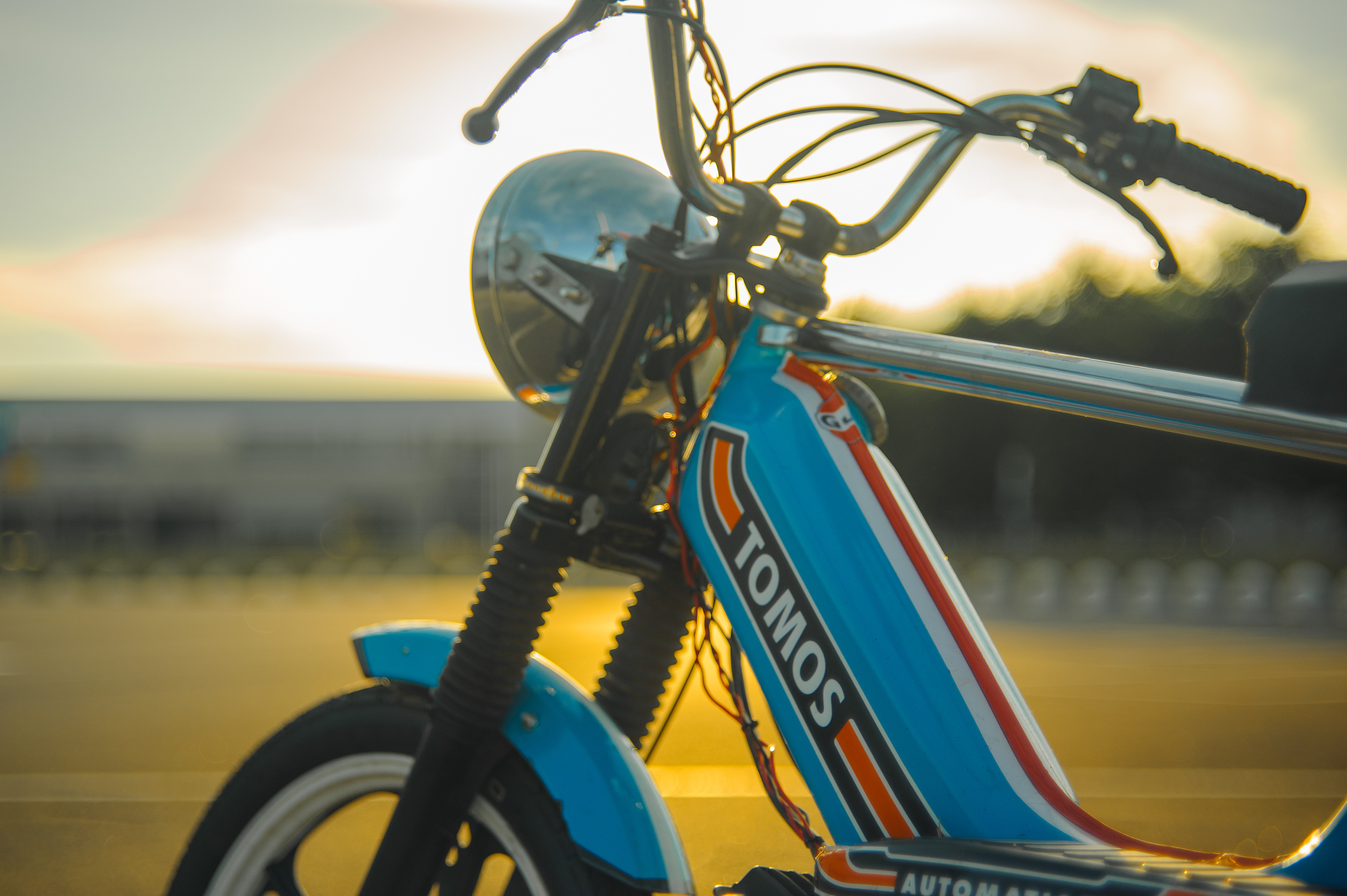
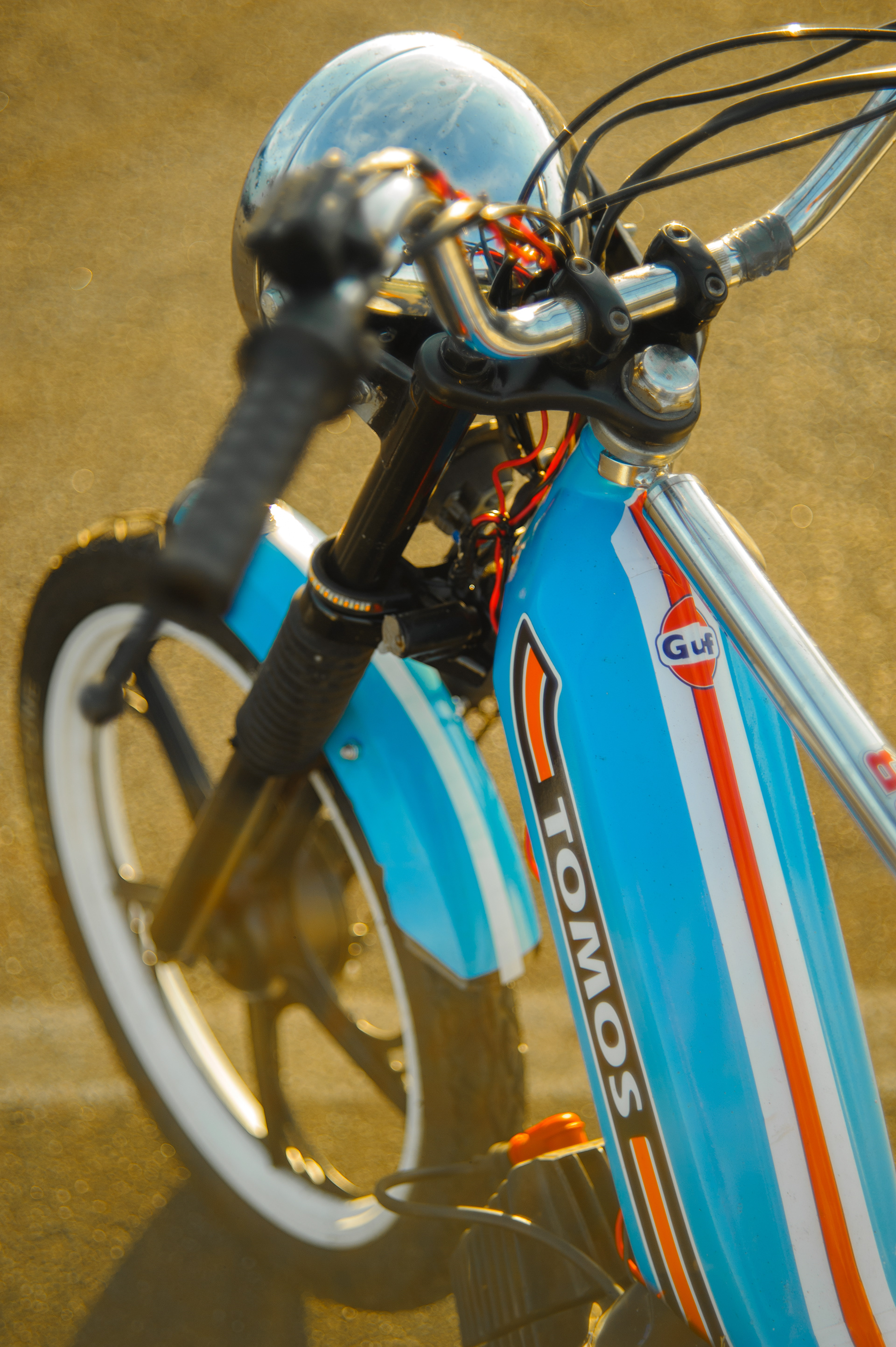
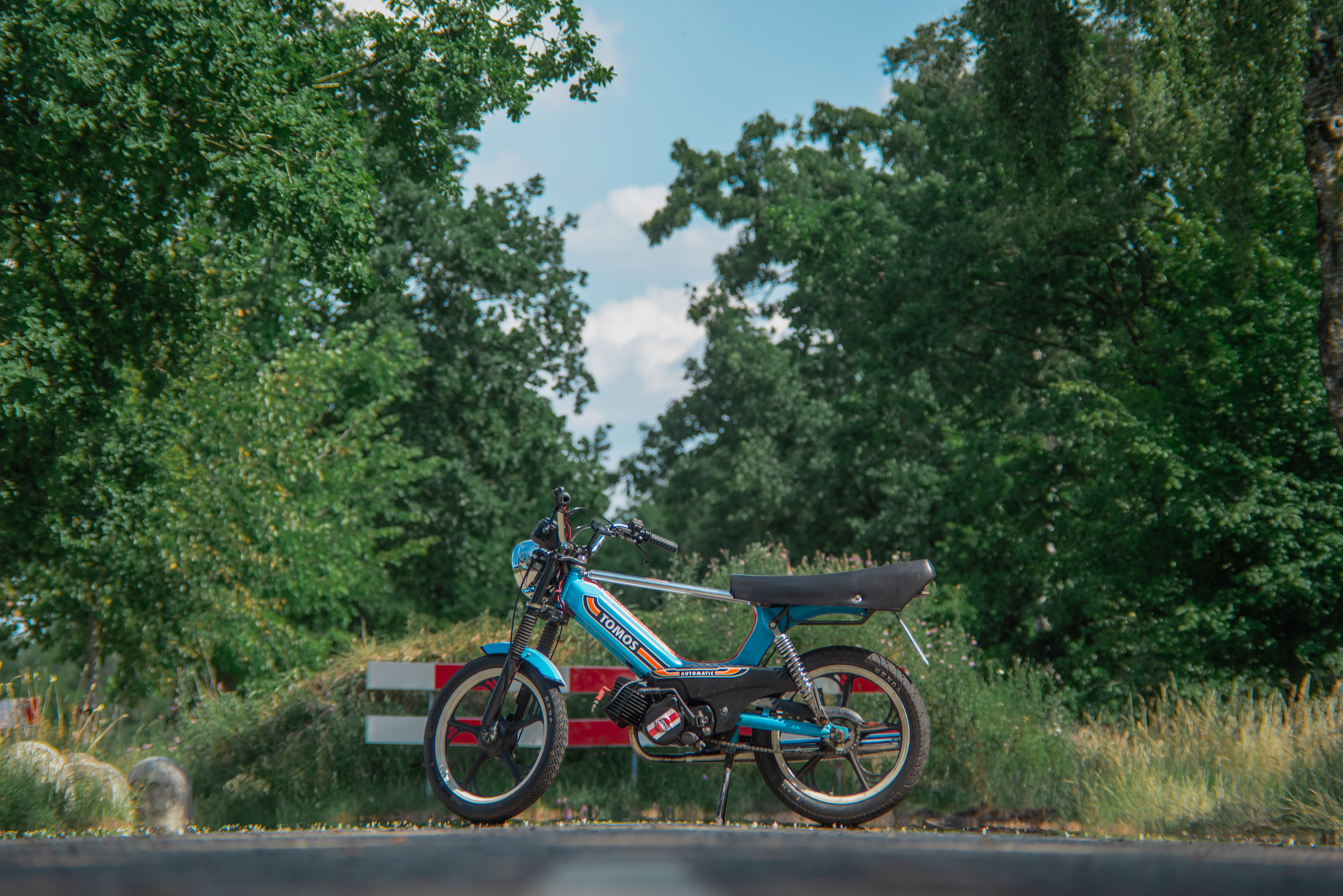
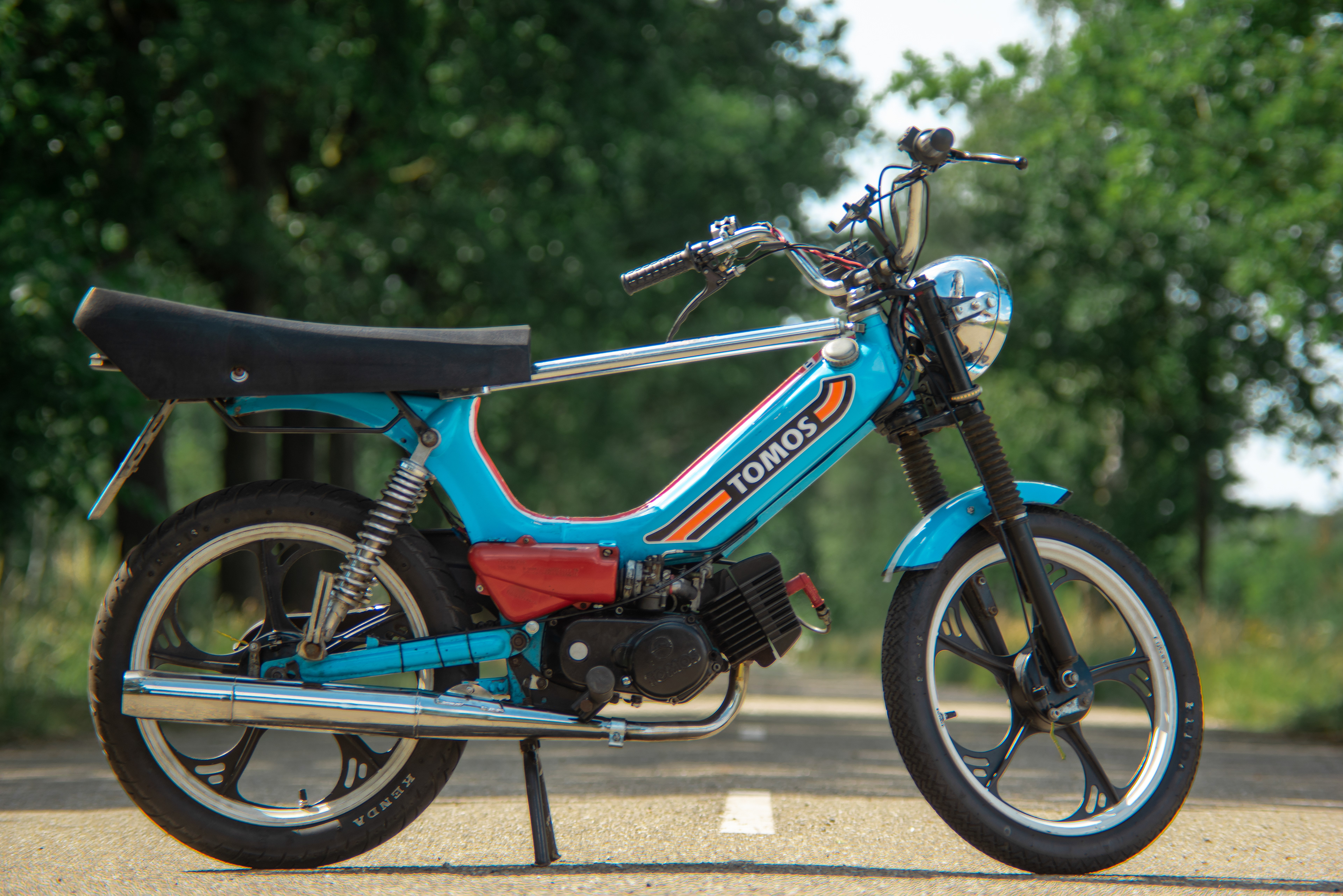
A systematic approach to moped restoration, combining functional engineering with thoughtful aesthetic design
Project Overview
A complete restoration and redesign of a 2005 Tomos A35 moped, transforming a non-functional, heavily corroded vehicle into a custom cafe racer-inspired machine. The project evolved through multiple iterations, each addressing both mechanical functionality and visual design while maintaining legal compliance with Dutch regulations.
Design methodology: Rather than planning all modifications upfront, the design evolved through daily use and real-world testing. Each upgrade was informed by riding experience, identifying practical issues and aesthetic opportunities organically.
Design methodology: Rather than planning all modifications upfront, the design evolved through daily use and real-world testing. Each upgrade was informed by riding experience, identifying practical issues and aesthetic opportunities organically.
Initial Condition (2022)
Non-running engine with seized components
Extensive rust throughout frame and parts
Immobile due to stuck wheels and brakes
50km from home workshop
Non-running engine with seized components
Extensive rust throughout frame and parts
Immobile due to stuck wheels and brakes
50km from home workshop
Version 1.1: Functional Restoration (2022)
Objective: Make the vehicle roadworthy for transport
Mechanical work:
Engine restoration and rebuild
Exhaust system repair
Brake system freed and serviced
New tires installed
Mechanical work:
Engine restoration and rebuild
Exhaust system repair
Brake system freed and serviced
New tires installed
Outcome: Functional but aesthetically unchanged; retained original appearance with visible rust and aging components. Operational but with excessive noise and suboptimal performance.
Version 2.0: Visual & Electrical Redesign (2023)
Objective: Modernize aesthetics and electrical system while improving usability
Visual modifications:
Vintage motorcycle headlight (oversized, period-appropriate)
Low-profile handlebars for cafe racer stance
Custom wheel paint treatment
Vintage Kreidler saddle
Custom cafe racer rear end with integrated lighting
Chrome center support bar
Objective: Modernize aesthetics and electrical system while improving usability
Visual modifications:
Vintage motorcycle headlight (oversized, period-appropriate)
Low-profile handlebars for cafe racer stance
Custom wheel paint treatment
Vintage Kreidler saddle
Custom cafe racer rear end with integrated lighting
Chrome center support bar
Electrical conversion:
Complete AC to DC system conversion
Modern LED lighting system
Full blinker system installation (not original equipment)
Design rationale: This version established the aesthetic direction—blending vintage motorcycle styling with modern functionality. The AC-to-DC conversion enabled use of reliable, efficient LED components while maintaining the vintage appearance.
Complete AC to DC system conversion
Modern LED lighting system
Full blinker system installation (not original equipment)
Design rationale: This version established the aesthetic direction—blending vintage motorcycle styling with modern functionality. The AC-to-DC conversion enabled use of reliable, efficient LED components while maintaining the vintage appearance.
First practical issue discovered: Suspension clearance insufficient for rider height, causing fender rubbing during riding. This informed the suspension upgrade in the next iteration.
Version 2.1: Frame Restoration & Suspension Upgrade
Objective: Address structural rust, refine visual presentation, and solve clearance issues
Frame work:
Complete disassembly
Rust removal through sanding
Professional primer and light blue paint application
Custom decal design and application
Redesigned front mudguard
Frame work:
Complete disassembly
Rust removal through sanding
Professional primer and light blue paint application
Custom decal design and application
Redesigned front mudguard
Mechanical upgrades:
Honda DAX rear suspension (improved ride quality and increased ground clearance)
Resolved fender rubbing issue discovered through daily use
Engine replacement:
Original engine bearings completely worn out (deemed not worth repair)
Sourced replacement engine with slipping clutch issue
Installed tuned high-pressure cylinder head
Chrome RS exhaust system
Honda DAX rear suspension (improved ride quality and increased ground clearance)
Resolved fender rubbing issue discovered through daily use
Engine replacement:
Original engine bearings completely worn out (deemed not worth repair)
Sourced replacement engine with slipping clutch issue
Installed tuned high-pressure cylinder head
Chrome RS exhaust system
Outcome: Professional finish with improved performance and proper ergonomics. Generated positive public response and validated design direction.
Version 3.0: Wheel System Overhaul & Interaction Design (2025, In Progress)
Objective: Address wear issues while elevating overall build quality and user experience
Initial attempt:
Sourced chrome spoke rims from S25 model
Rear wheel incompatibility led to alternative search
Revival wheel system:
Tomos Revival wheels, front fork, and swing arm
Cross-compatible with A35 platform
Heavy restoration required (rust removal, cleaning, polishing)
Original tires retained after refurbishment
Hydraulic disc brake (front)—significant braking performance improvement
Sourced chrome spoke rims from S25 model
Rear wheel incompatibility led to alternative search
Revival wheel system:
Tomos Revival wheels, front fork, and swing arm
Cross-compatible with A35 platform
Heavy restoration required (rust removal, cleaning, polishing)
Original tires retained after refurbishment
Hydraulic disc brake (front)—significant braking performance improvement
Installation requirements:
New chain for proper fitment
Swing arm bearing replacement due to play
New chain for proper fitment
Swing arm bearing replacement due to play
Electrical & interaction redesign:
Battery integration via custom-designed sliding case (frame-mounted)
Ignition key and switch installation
Button controls relocated to chrome support bar
Minimalist handlebar controls for cleaner aesthetic
Security improvement through key-based ignition
Battery integration via custom-designed sliding case (frame-mounted)
Ignition key and switch installation
Button controls relocated to chrome support bar
Minimalist handlebar controls for cleaner aesthetic
Security improvement through key-based ignition
Interaction philosophy: Rejected off-the-shelf lighting systems and control panels in favor of custom solutions. Pre-made systems diminish the tactile, engaging experience of riding by oversimplifying controls and reducing rider connection to the machine.
Performance optimization:
Upgraded carburetor for improved fuel delivery
Design Philosophy
This build distinguishes itself from typical Tomos community projects through its emphasis on holistic design rather than pure performance tuning:
User-centered iteration:
Design decisions driven by actual riding experience
Problems discovered through daily use, not theoretical planning
Ergonomic considerations based on rider's physical requirements
Aesthetic considerations:
Every component serves a visual purpose
Cohesive vintage-modern hybrid styling
Attention to detail in finishing and presentation
Interaction design:
Logical control placement
Custom solutions over prefabricated systems
Preserved tactile engagement and riding experience
Security features integrated naturally
Legal compliance:
Performance modifications kept within Dutch legal limits
Focus on areas where regulation allows creativity
Lighting & electronics:
Underexplored area in the Tomos community
Significant visual impact potential
Modern reliability with period-appropriate appearance
Structural integrity:
All modifications maintain or improve safety
Professional finishing techniques throughout
Conclusion
This project demonstrates that moped customization can extend beyond engine tuning into a comprehensive design exercise. By living with and riding the moped through each iteration, design decisions emerged from real needs rather than assumptions. The rejection of convenient, off-the-shelf solutions in favor of thoughtful custom work preserves the rich, engaging experience that makes riding rewarding. By addressing aesthetics, interaction, and details often overlooked in the community, the build achieves a distinctive character while remaining practical and legally compliant. The iterative process shows how systematic problem-solving and thoughtful design decisions can transform a derelict vehicle into a cohesive, show-quality machine.
